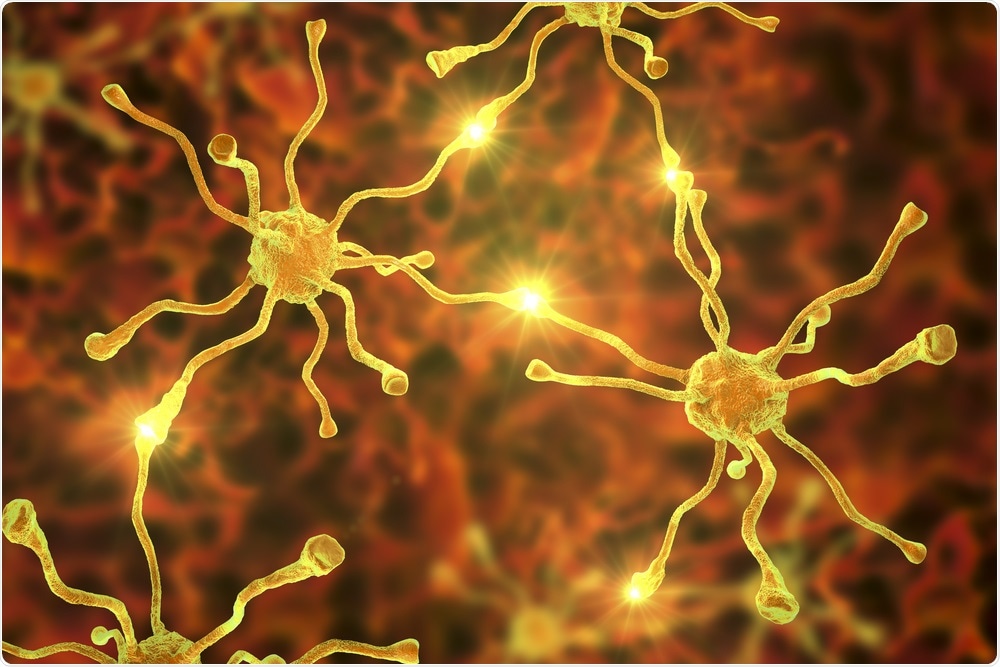New research led by the Cold Spring Harbor Laboratory Associate Professor Molly Gale Hammell could pave the way for improved diagnosis and more effective treatments for amyotrophic lateral sclerosis (ALS).
 Kateryna Kon / Shutterstock.com
Kateryna Kon / Shutterstock.com
ALS, which is also known as motor neuron disease (MND), currently has no cure. The disease is characterized by the death of neurons that control voluntary muscle movement.
Progression of the condition sees muscles become weaker, speech and the ability to swallow becomes impaired, and patients eventually have difficulty breathing, with many dying of respiratory failure or pneumonia. The exact cause of ALS has not yet been identified, although scientists believe both genetic and environmental factors play a part.
The new study, published in Cell Reports, analyzed the part TDP-43 proteins (so-called for their role in creating transactive response DNA binding protein 43 kDa) play in ALS.
These proteins collect in nerve cells found in the brain and spinal cord and form clumps (or aggregates), causing large numbers of the nerve cells to die. It is this mass eradication of nerve cells that sees ALS patients paralyzed over the course of the disease.
By analyzing the functions of TDP-43 proteins, which are found inside cell nuclei in most tissues, Hammell and her research team aimed to find out whether there were differences between patients’ ALS cases.
This is because patients do not always develop the same set of symptoms, with some experiencing weaknesses in the legs before the condition progresses and others experiencing problems with speech at the onset of the ALS. Some patients also go on to develop frontotemporal dementia (FTD), while others do not, and the reasons for these differences are unclear.
TDP-43 has been identified as a major pathological protein in ALS, with at least 60 mutations in the TARDBP gene being found to cause the TDP-43 protein to misfold and form the protein clumps in motor neurons. TDP-43 has also been implicated in FTD, which scientists now believe is a closely related condition to ALS.
In a study published in Current Opinion in Neurology, authors write that the discovery of “elevated plasma levels of TDP-43, in some patients with neurodegenerative disease, supports the possible use of TDP-43 as an in vivo biomarker to aid in diagnosis and monitoring the effects of therapy.”
The authors go on to say that in discovering that TDP-43 plays an important role in both ALS and FTD, there has been a “major” advance towards effective management of both of these serious conditions.
Hammell’s study interrogated the links between TDP-43 and retrotransposons, which are also called jumping genes for their ability to move from one location in a genome to another. This area was of interest to the research teams as TDP-43 is one protein that is able to keep jumping genes silent, and were found in elevated levels in some patients with ALS.
However, TDP-43 is unable to silence jumping genes when it is growing in clumps in nerve cells, and by studying gene expression in brain tissue samples from post-mortem ALS patients, both with and without TDP-43 pathology, they found that jumping genes were not silenced as extensively in patients with high levels of TDP-43 proteins.
These jumping genes are telling us about patients who have TDP-43 pathology. We really don’t know why one patient would have one set of symptoms versus another, and we’re trying to answer that question.”
Molly Gale Hammell, Associate Professor, Cold Spring Harbor Laboratory
The researchers hypothesize that high levels of jumping genes may mimic viral pathogens or other infections in tissues, meaning that antiviral medications or alternative therapies could target these genes specifically.
“That’s one of the things we’re really excited about as a possibility,” Hammell continued. “Going forward, we want to understand whether transposons are causing the disease and whether they’re involved in other diseases that also tend to have TDP-43 aggregates, like frontotemporal dementia and some subsets of Alzheimer’s.”
Journal references:
- Tam, O. H., et al. (2019). Postmortem Cortex Samples Identify Distinct Molecular Subtypes of ALS: Retrotransposon Activation, Oxidative Stress, and Activated Glia. Cell Reports. DOI: 10.1016/j.celrep.2019.09.066.
- Mackenzie I. R. A. & Rademakers, R. (2019). The role of TDP-43 in amyotrophic lateral sclerosis and frontotemporal dementia. Curr Opin Neurol. DOI: 10.1097/WCO.0b013e3283168d1d.